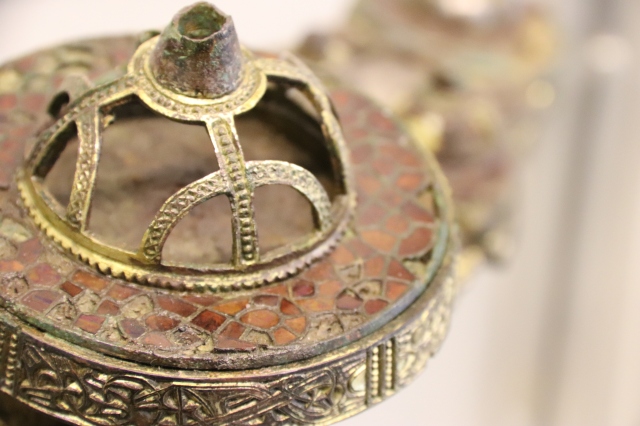Jewelry wasn’t just for decoration. They were also functional. In the Iron Age, pair of brooches were often used to hold a dress in place at the shoulders, while a stronger and more elaborate brooch could fasten a cloak or shawl. Some brooches, such as some relief brooches from the Migration period, are so large, heavy and impractical that people probably only uses them on special occasions, such as feasts, ritual processions or religious ceremonies. So called ‘ryggknappspenner’ or ‘disc on bow’ brooches is examples of brooches that are a bit unpractical and big for everyday use.

Not everyone could afford to own jewelry. Owning a piece of jewelry was often reserved for the elite. It was a sign of status, power and rank. The more expensive jewelry, the higher the status. The few who belonged to the upper strata of society, such as the aristocracy of the Iron Age, showed the power of the family by dressing themselves up with rare and exclusive jewelry. During the Migration period and the Merovingian period, some brooches were just super enormous and flashy, like the ‘disc on bow’ brooch from Overhalla.

Ryggknappspenne, or ‘disc on bow’ brooch (T6574) from Melhus, Overhalla.
Photo by Per E. Fredriksen, NTNU Vitenskapsmuseet, CC BY-SA 4.0
Throughout the entire prehistory it was common to be buried with the jewelries. The burial custom in Scandinavia during the Migration period, the Merovingian period and the Viking age shows that the jewelry was a very important part of how a person was perceived. It seems like it must have been unthinkable to be buried without jewelry if you had higher status in the society. The jewelry would show what position the deceased should take in the afterlife. Primarily, it was the women who wore jewelry, but men also wore some them, especially pendants, rings, arm rings and brooches. Both men and women are found buried with their jewelries.
Many pieces of jewelry were already old and worn when they ended up in the grave with their last owner. Some jewelry even shows signs of being repaired. Even the most expensive, elaborate and rare jewelry shows signs of wear and long-term use, indicating that they were specially held. The type of brooch, like the one from Overhalla, was used for a long time. Several of these brooches have been found in younger graves and were almost 100 years when they were put into the ground with the dead. This might indicate that they were inherited for several generations before they ended up as grave goods.

The brooch from Melhus, Overhalla is 24 cm in length and well preserved. The brooch is made from bronze, with gold plating and inlaid garnets. On the main disc, some of the garnets are placed in such way that they form shapes of eights. This is a lovely details which is one of my favorite things about this brooch. Merovingian brooches like this were reserved for the aristocracy, so this must have belonged to someone very rich and powerful.

Close-up of a brooch from Overhalla, Trøndelag, Norway (T6574).
Information:
Collection Online
Norgeshistorie.no

Pingback: December 23th – Brooches – Tonje Rogersdatter – A viking life